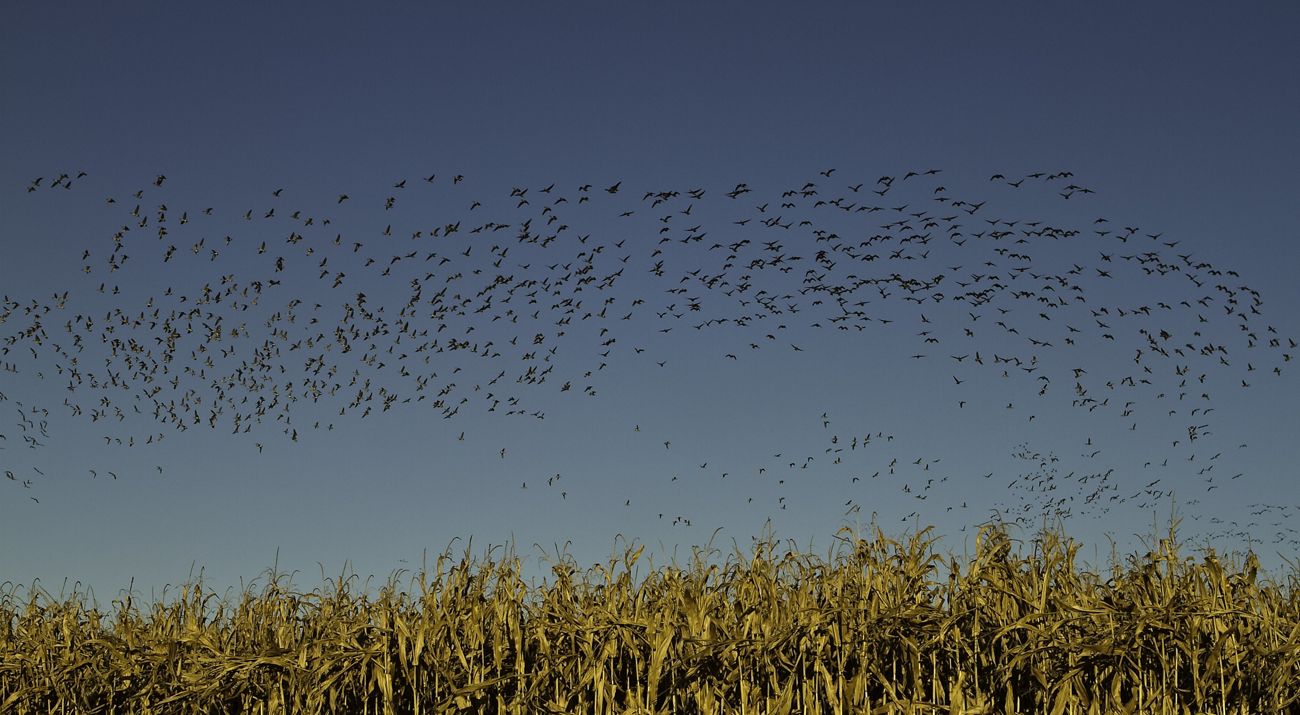The Innovative BirdReturns Program Receives Critical Funding from the California Department of Fish and Wildlife
Media Contacts
-
Armin Mahramzadeh
Media Contact
The Nature Conservancy
Email: a.mahramzadeh@tnc.org
The BirdReturns Program helps to identify and create cost-effective temporary wetlands for water birds and other wildlife.
On behalf of the the Migratory Bird Conservation Partnership (MBCP), which includes The Nature Conservancy (TNC), Audubon California and Point Blue Conservation Science, TNC has entered into an agreement with the California Department of Fish and Wildlife (CDFW) for CDFW to provide up to $15,000,000 in funding for habitat enhancement work through the BirdReturns Program over the next three years. Established in 2014, BirdReturns creates temporary wetlands when and where birds need them most in a targeted, data-driven and cost-effective manner.
“This is the biggest public investment into BirdReturns to date,” said Ryan Luster, Senior Project Director at TNC. “We are ecstatic that the Partnership is receiving such strong support, leadership and funding from the California Department of Fish and Wildlife, so that we can continue to provide much-needed habitat for birds and other wildlife, as well as scale up our efforts.”
To complete their life cycles, migratory species may have varied but temporary habitat needs spread over vast areas. If any key linkages of the migratory route are lost, the species may soon follow. For millennia, the wetlands of California have provided a critical linkage for water birds migrating along the Pacific Flyway between the Arctic and Patagonia. Yet, most of the once extensive wetland complexes in the State have been lost—converted to one of the most productive agricultural landscapes in the world. As a partial consequence, most migratory bird populations in California are in precipitous decline and shorebird populations continue to decline at a rate that would result in them being practically non-existent in the Sacramento Valley or even the entire Pacific Flyway between the Arctic and South America in 40-50 years.
However, using data analytics and citizen science, the BirdReturns Program holds reverse auctions to target specific places and times, paying agricultural and wetland landowners to provide seasonal habitat on their property by flooding their fields at critical times in ways that diversify the habitat available for birds and other wildlife, allowing them to thrive.
Over the last nine years, the Partnership has conducted 18 auctions and delivered over 120,000 acres of seasonal habitat for migratory water birds at a cost (projected over time) of less than 10% of the traditional cost of land protection through fee ownership, conservation easement or lease. While this innovative approach can efficiently deliver meaningful cost-effective conservation returns, there remain significant barriers to scaling. To lower this barrier, the MBCP seeks to engage a broader community of landowners over larger landscapes in California, leveraging the co-benefits that dynamic water management for birds can offer different communities.
The Nature Conservancy is a global conservation organization dedicated to conserving the lands and waters on which all life depends. Guided by science, we create innovative, on-the-ground solutions to our world’s toughest challenges so that nature and people can thrive together. We are tackling climate change, conserving lands, waters and oceans at an unprecedented scale, providing food and water sustainably and helping make cities more resilient. The Nature Conservancy is working to make a lasting difference around the world in 81 countries and territories (40 by direct conservation impact and 41 through partners) through a collaborative approach that engages local communities, governments, the private sector, and other partners. To learn more, visit nature.org or follow @nature_press on X.
About Audubon
The National Audubon Society protects birds and the places they need, today and tomorrow. Audubon works throughout the Americas using science, advocacy, education and on-the-ground conservation. State programs, nature centers, chapters and partners give Audubon an unparalleled wingspan that reaches millions of people each year to inform, inspire and unite diverse communities in conservation action. A nonprofit conservation organization since 1905, Audubon believes in a world in which people and wildlife thrive. Learn more at www.audubon.org and on Facebook, Twitter and Instagram @audubonsociety.
About California Department of Fish and Wildlife
CDFW is responsible for management of over 1.1 million acres of fish and wildlife habitat spanning over 700 properties statewide. These properties provide habitat for a rich diversity of fish, wildlife and plant species and comprise habitats from every major ecosystem in the state. In addition, several private lands conservation programs assist landowners with the management of wetlands, riparian habitats, native grasslands and wildlife-friendly farmlands.
About Point Blue Conservation Science
Point Blue advances conservation of birds, other wildlife and ecosystems through science, partnerships and outreach. Our highest priority is to reduce the impacts of habitat loss, climate change and other environmental threats while promoting nature-based solutions for wildlife and people, on land and at sea. Visit Point Blue at www.pointblue.org.
